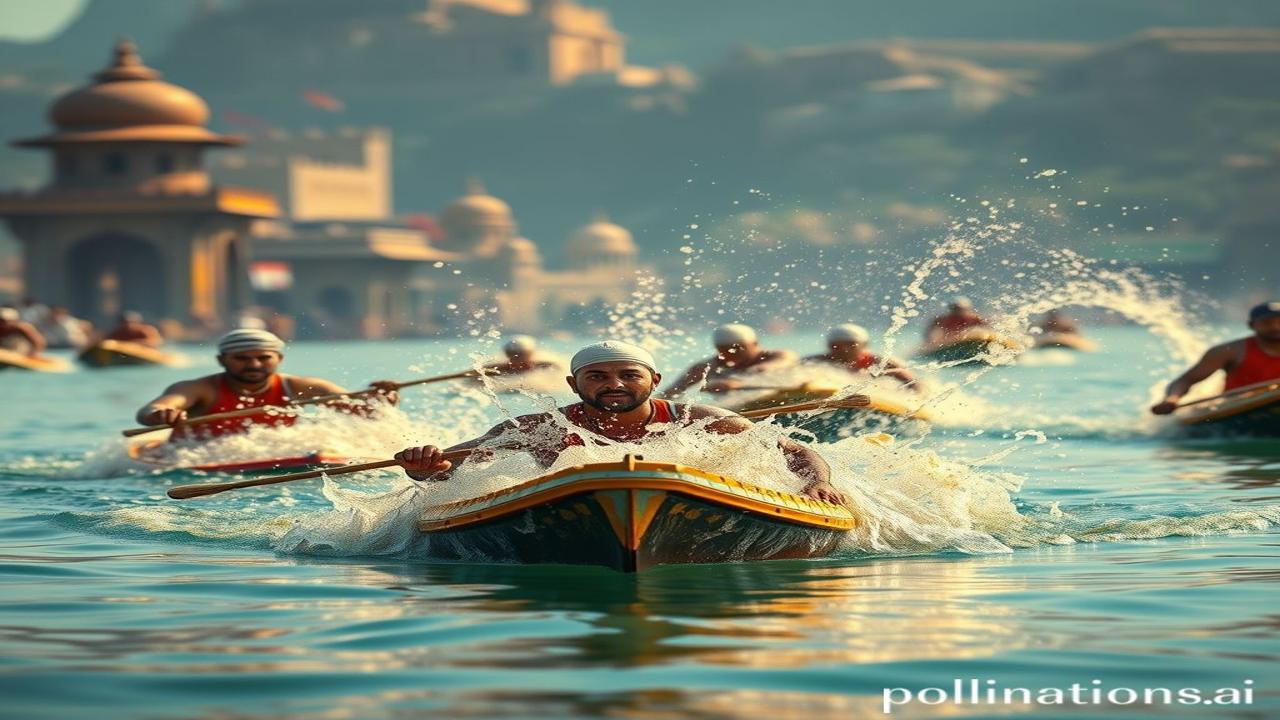Paani Ki Leela: Celebrating Water Across India – A Journey Through Time and Tradition
Kabhi socha hai, jab monsoon ki pehli boond dharti ko chhoo leti hai, toh kitni kahaniyan jee uthti hain? Kitne rang, kitni aawazein, kitni umangein ek saath ubharti hain? From the snow-capped Himalayas to the sun-kissed beaches of Kanyakumari, paani sirf zaroorat nahi, zindagi hai. Aur is zindagi ko celebrate karne ke liye, India mein hai dher saare tyohar – water festivals! Aaj hum chalein ge inhi tyoharon ki khoj mein, peek into their history, and understand their significance in our lives even today.
Jal Hi Jeevan: The Historical & Cultural Tapestry
India, a land of diverse landscapes and even more diverse cultures, has always revered water. Our ancient civilizations, like the Indus Valley Civilization, thrived along riverbanks. Paani, not just as a resource, but as a deity, has been woven into the fabric of our rituals and beliefs. Remember, “Jal hi Jeevan hai”? It’s not just a saying; it’s a way of life.
Many water festivals have roots that go back centuries, some even millennia! Think of the ancient Vedic rituals performed by the rivers, invoking the gods of water and prosperity. These weren’t just religious ceremonies; they were deeply connected to agriculture, community bonding, and ecological awareness. They highlighted the importance of respecting and conserving this precious resource.
For instance, Chhath Puja, celebrated mainly in Bihar, Jharkhand, and Uttar Pradesh, is dedicated to Surya Bhagwaan and Chhathi Maiya. The devotees offer prayers while standing in water bodies, thanking the sun and the river for their blessings. This festival, believed to be traced back to the Vedic period, showcases a deep connection between humans, nature, and spirituality.
Zameeni Sach: People, Life, and the Flow of Time
Imagine Ma Yashoda, after bathing little Krishna, walking towards the ghat of Yamuna, her heart filled with love and gratitude. The sun, a fiery ball in the sky, reflects off the water, creating a mesmerizing dance of light and shadows. Nearby, farmers offer prayers to the river, hoping for a good monsoon and a bountiful harvest.
Or, think about a young fisherman in Kerala, casting his net into the backwaters, chanting an ancient mantra passed down through generations. The rhythmic sound of the oars cutting through the water, the salty air, and the hope for a good catch – it’s a way of life deeply intertwined with the water around them.
These aren’t just stories; they are glimpses into the everyday lives of people whose lives are inextricably linked to water. Rulers, artisans, farmers, and saints – each played their role in shaping the traditions surrounding water, passing down customs and beliefs through generations.
Dharohar Aur Pehchan: Water Festivals in Modern India
Even today, in the age of technology and urbanization, the essence of these water festivals remains potent. We see it in the grand celebrations of Pushkaralu in Andhra Pradesh, where thousands flock to take a holy dip in the Godavari River. We feel it in the vibrant colors of Holi, where water guns and balloons become instruments of joy and camaraderie, washing away differences and spreading cheer.
These festivals are more than just rituals; they are a celebration of our Bharatiyata. They remind us of our connection to nature, the importance of community, and the enduring power of faith. They serve as a powerful reminder to conserve water and treat it with respect.
Mazedar Tathya: Did You Know This?
Log samajhte hain ki Holi sirf rangon ka tyohar hai, lekin asli sach yeh hai ki, its also a festival celebrating the victory of good over evil and the welcoming of the spring season. The use of water during Holi symbolizes purification and renewal. And the vibrant colours are believed to bring positive energy and wash away negativity.
Drishya Aur Bhavnaen: Sensory Immersion
Imagine standing on the banks of the Ganges during Ganga Dussehra. The air is thick with the scent of incense and marigolds. The temple bells chime, echoing across the ghats. The sound of chanting reverberates through the crowd. And as you touch the cool, flowing water, you feel a sense of peace and serenity wash over you. It’s an experience that transcends the senses, leaving a lasting impression on your soul.
Antim Vichar: Where the River Meets the Soul
In the end, these water festivals are not just about rituals and celebrations; they are about recognizing the sanctity of water and our dependence on it. They are about celebrating the source of life and acknowledging its importance in our lives.
As the great Indian poet Rabindranath Tagore wrote: “The same stream of life that runs through my veins night and day runs through the world and dances in rhythmic measures.”
Let us remember this as we celebrate the leela of water, the essence of life, and the spirit of India.
